Background:
After conducting a flow test with a different, shorter Vibrant air filter, I placed the intake inside the engine compartment to see how it fit on the Shuenk IS48 turbocharger with anti-surge housing.
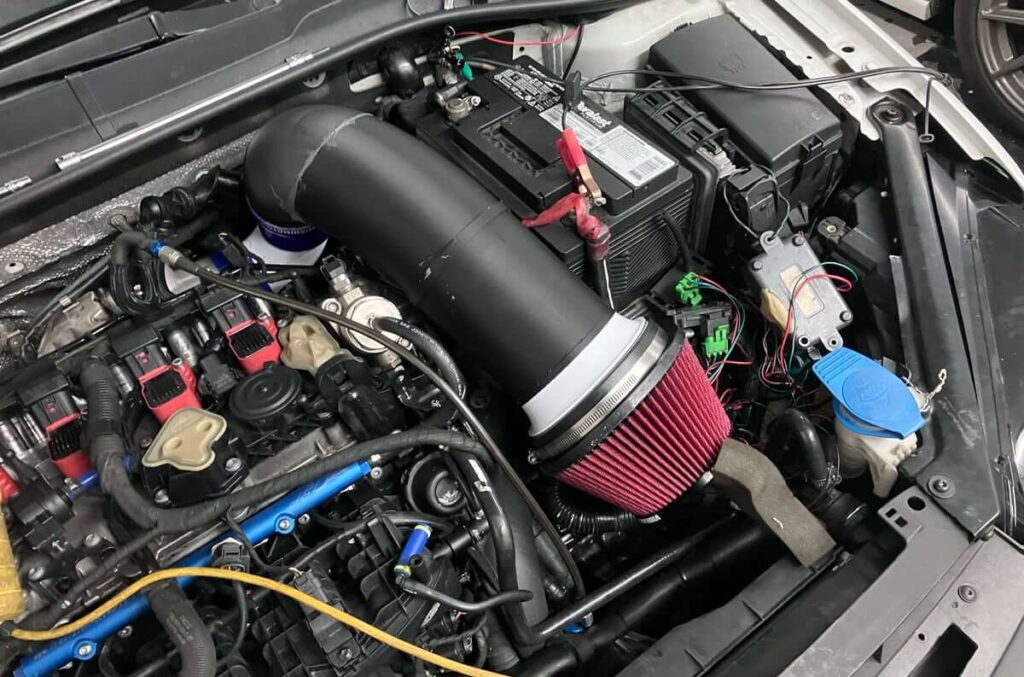
What became evident right away was that the intake design would need more development to work with the IS48 turbo and the shorter air filter.
The first step would be to make an elbow adapter to fit the ported shroud version of the Shuenk IS48 turbo.
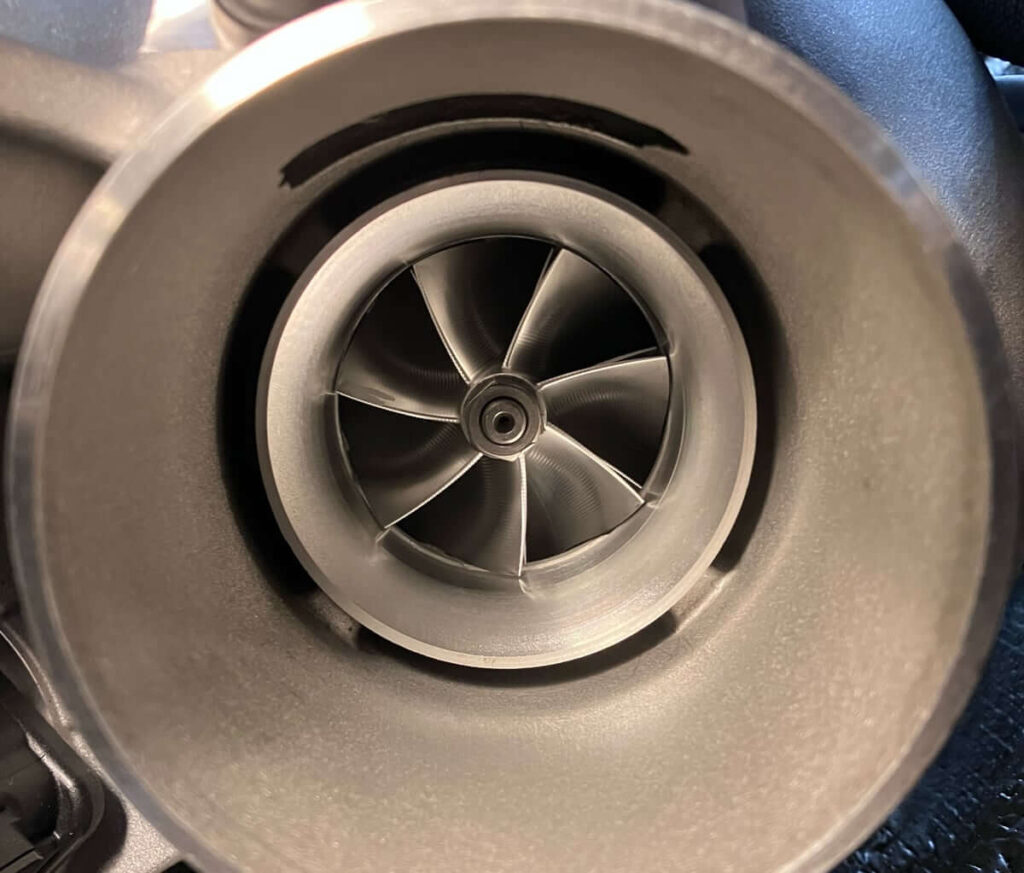
Design steps:
This was more challenging than initially expected due to the part being designed for attachment by a silicone hose.
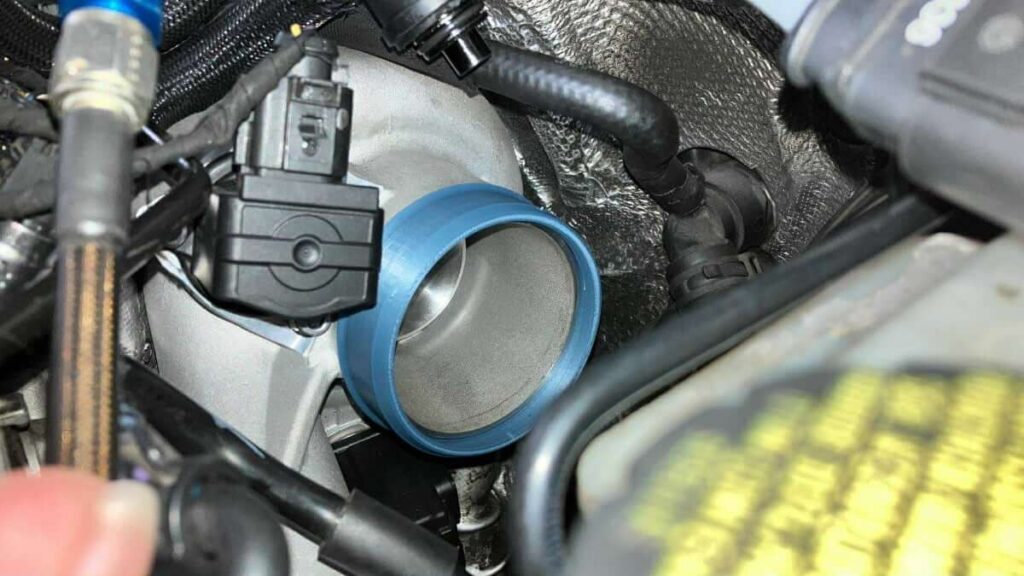
After a few revisions, I extended the elbow to resemble a conventional turbo inlet pipe.
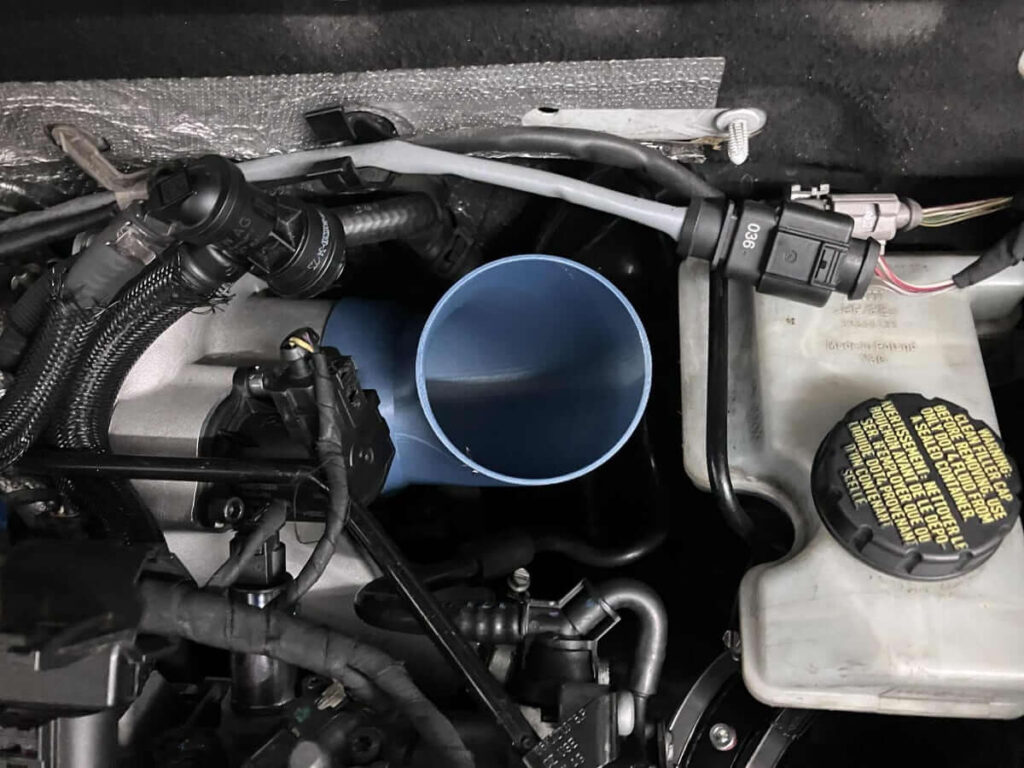
This elbow design underwent several revisions as I worked to increase the airflow rate.
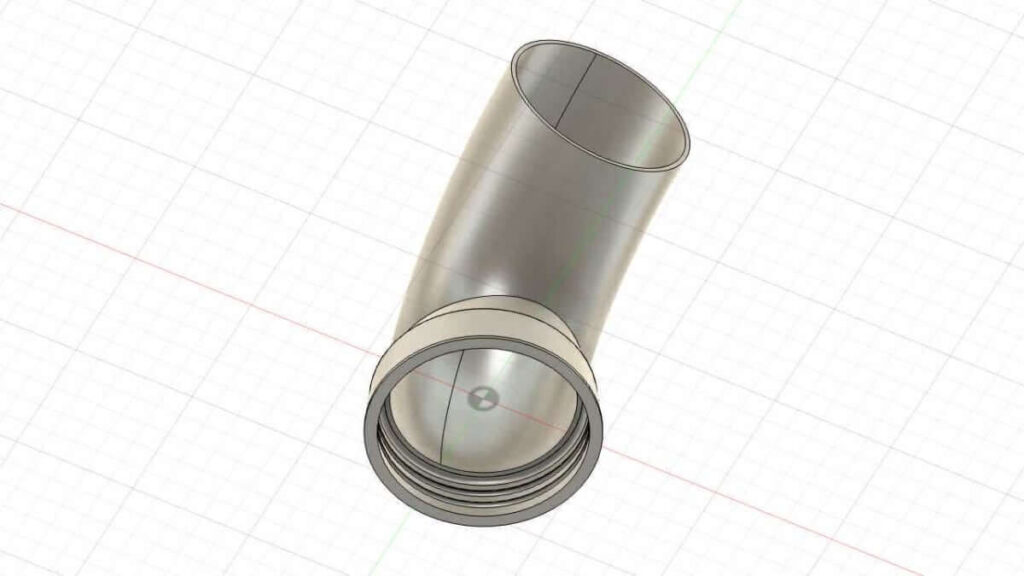
Another test fitting was made using an existing intake, showing that the intake would need revision even with the new elbow design.
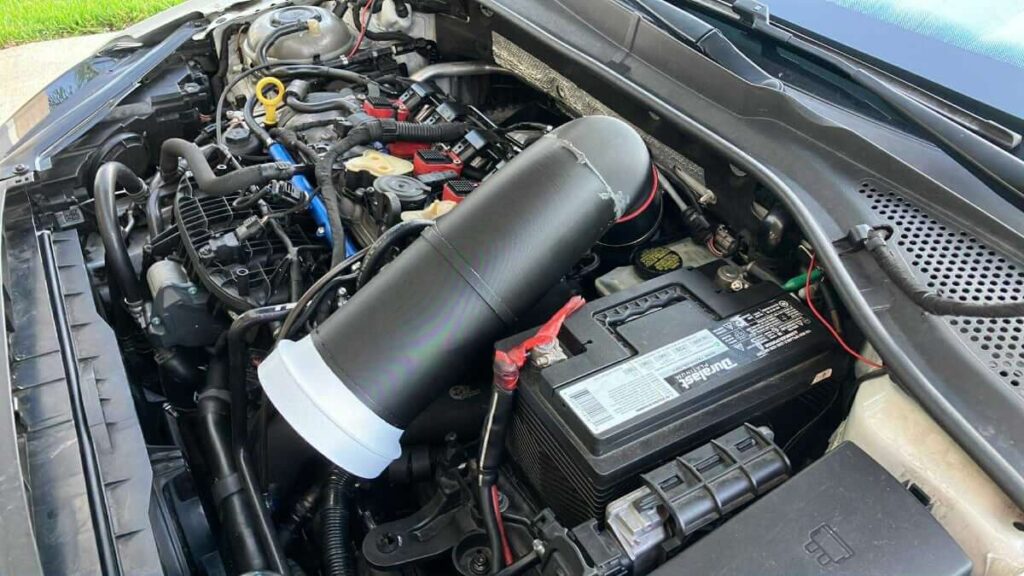
Flow tests:
A number of flow tests comparing the elbow revisions with the baseline Shuenk IS48 inlet hose were made.
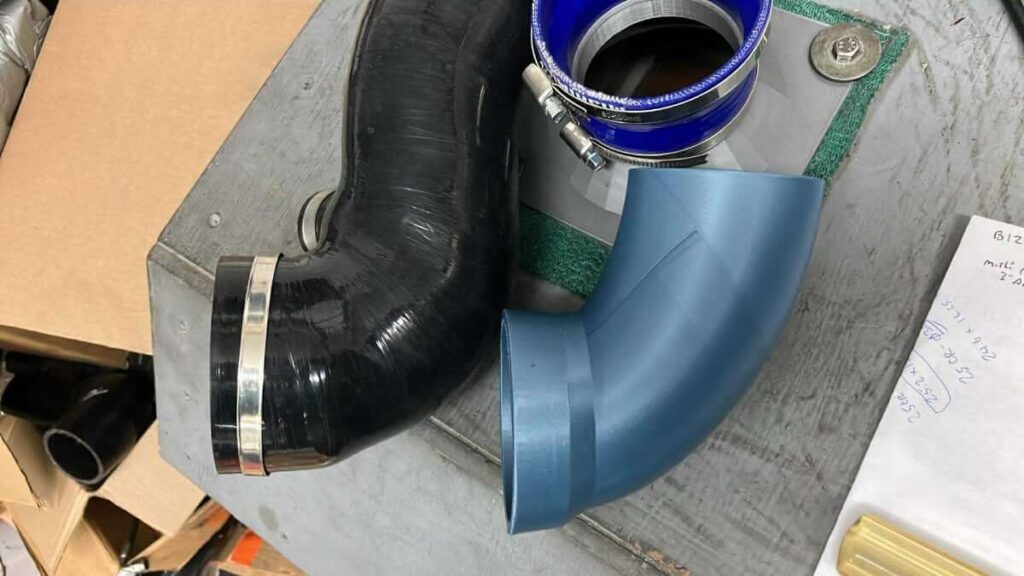
These showed promising results from the revised elbow.
More tests were conducted on the tall Vibrant air filter and its short version to determine the flow rate differences with this new intake setup.
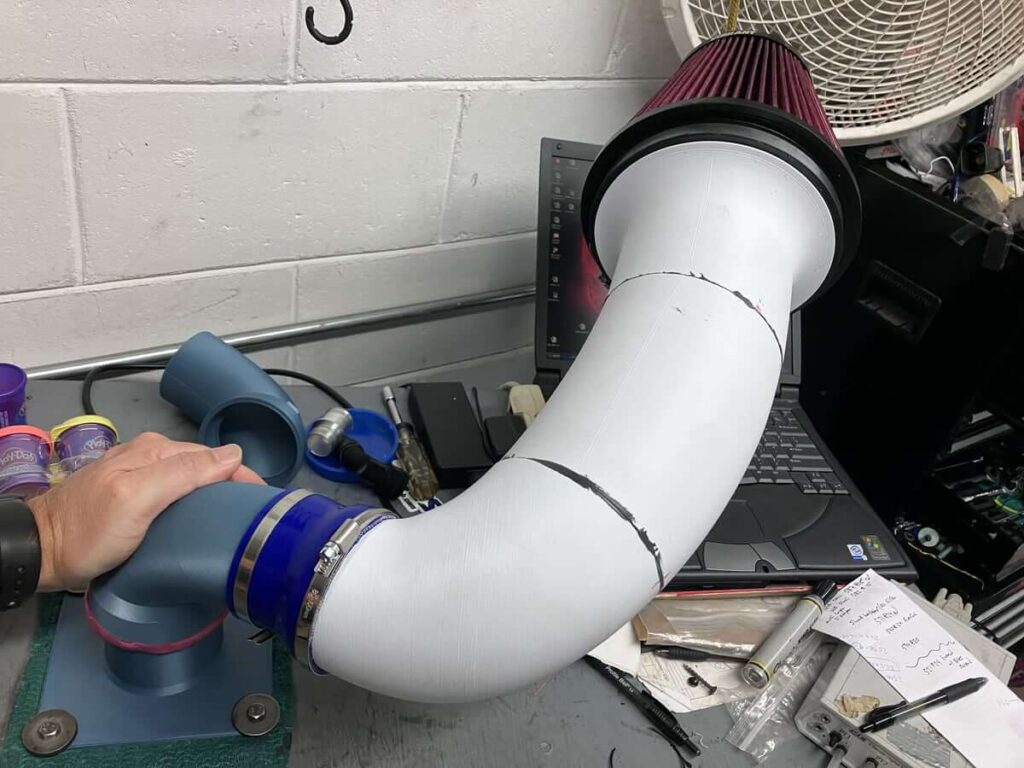
Vibrant short filter flow test:
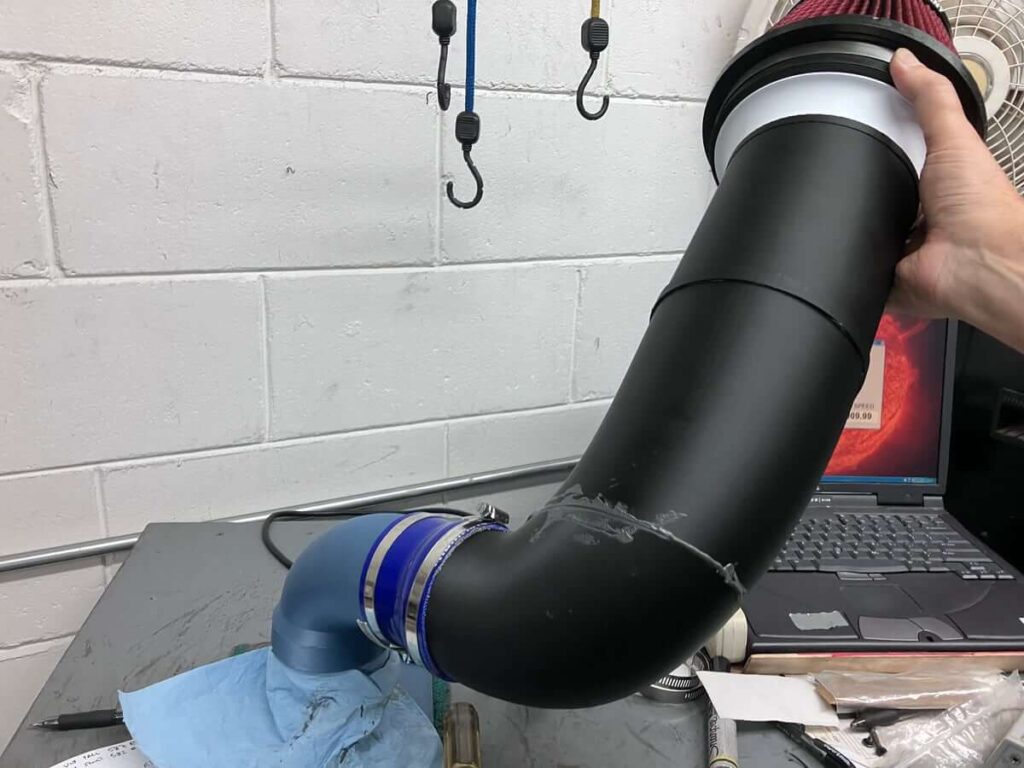
Interested to see how the intake I had been using in the GTI compared, I performed a flow test with the Eventuri intake.
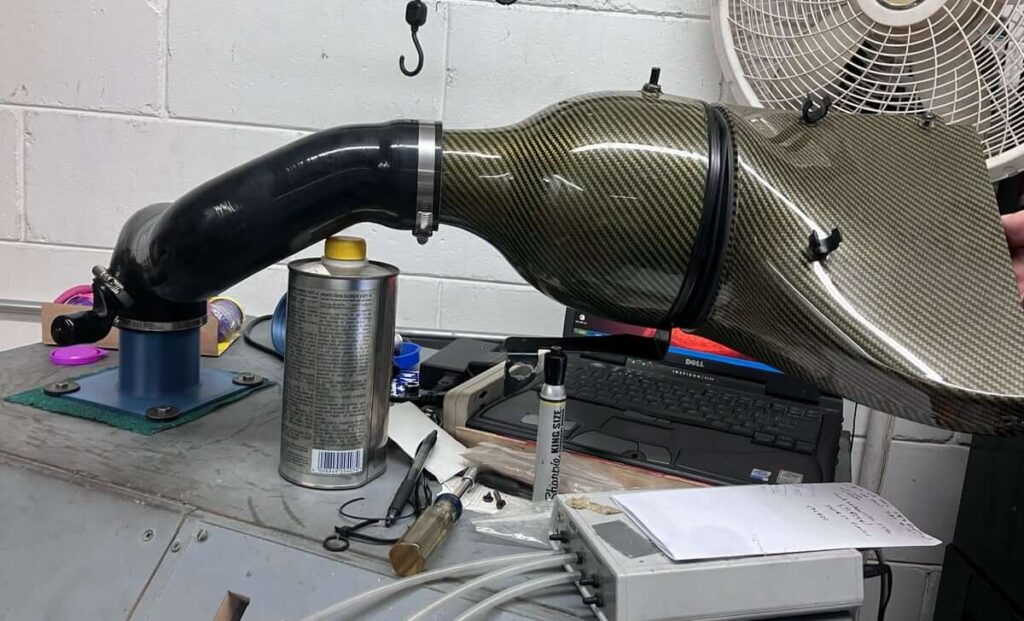
Then a Racingline R600 intake air filter was tested.
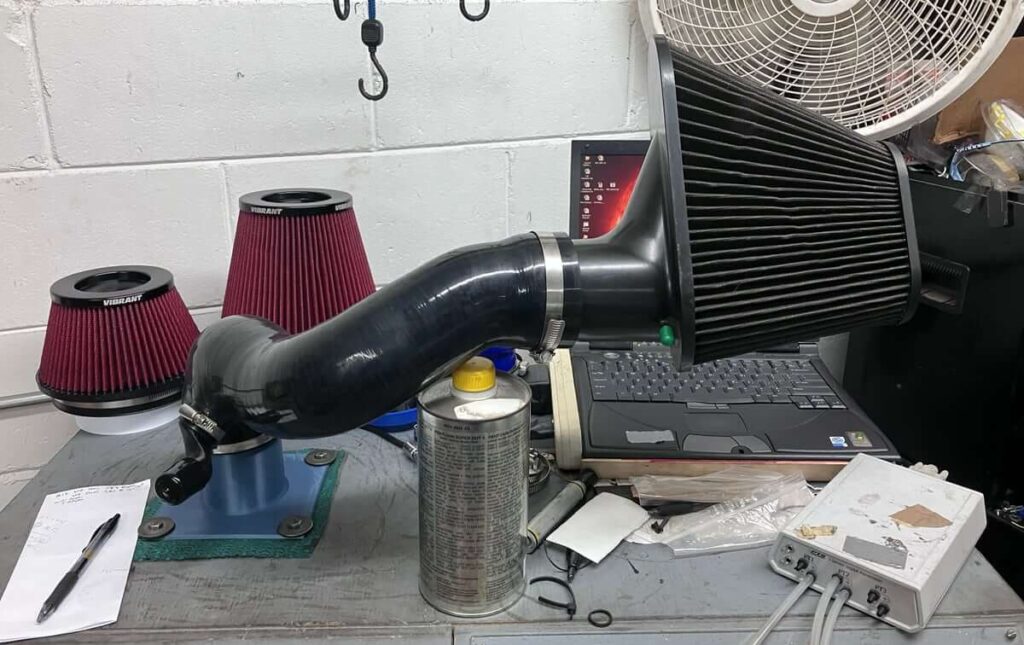
The results of the three tests are shown below.
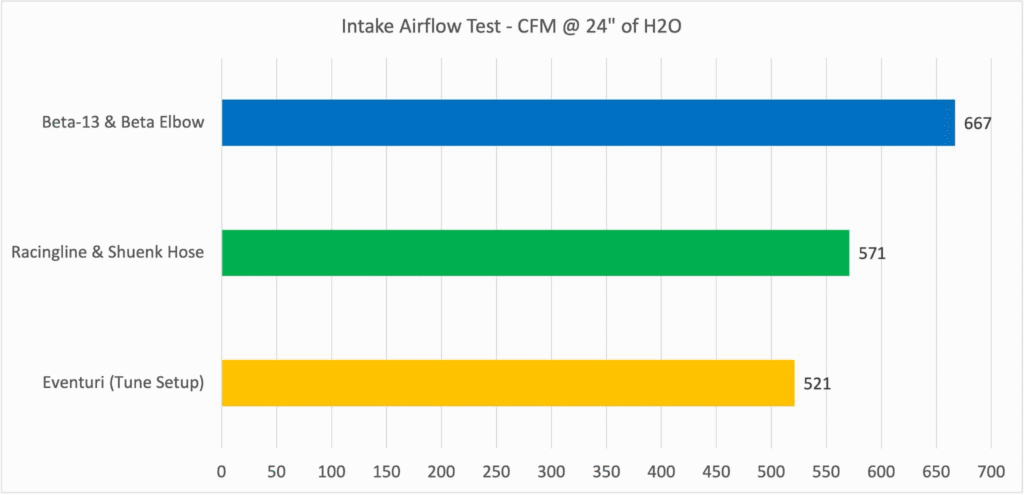
Note: The Beta-13 airflow is an estimate as it reaches the bench maximum flow rate of 600 CFM at 18″ of H2O.
With the Racingline filter setup showing a modest increase in airflow compared with the Eventuri, I decided to install it on the GTI and conduct a logged test drive.
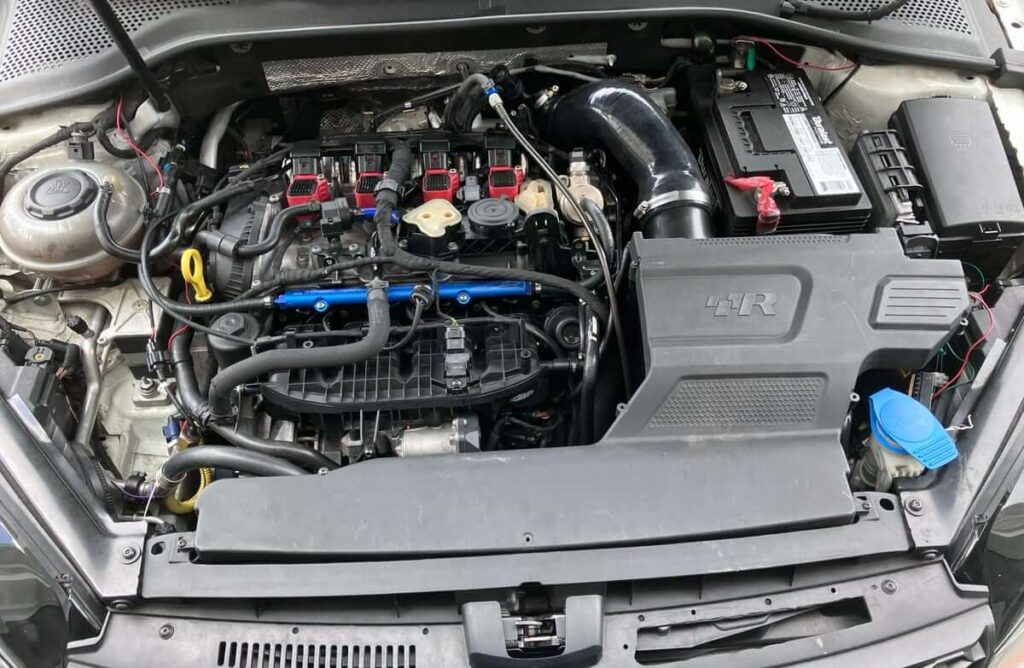
There was no appreciable difference in the turbocharger wastegate duty cycle between the Eventuri and Racingline when logging in 3rd and 4th gears.

Note: The difference in WGDC shown in the graph is due to the transmission gear selected during logging.
This result led me to theorize that the enclosure around the Racingline filter in the car was slightly reducing airflow. The recorded airflow, 571 CFM @ 24″ of H2O, is substantially higher than what a typical hybrid turbocharger compressor inlet supports —around 500 CFM @ 28″ of H2O —and any airflow restriction could affect the measurements. Note: Testing at 28″ of depression will produce a higher airflow rate than 24″ of H2O.
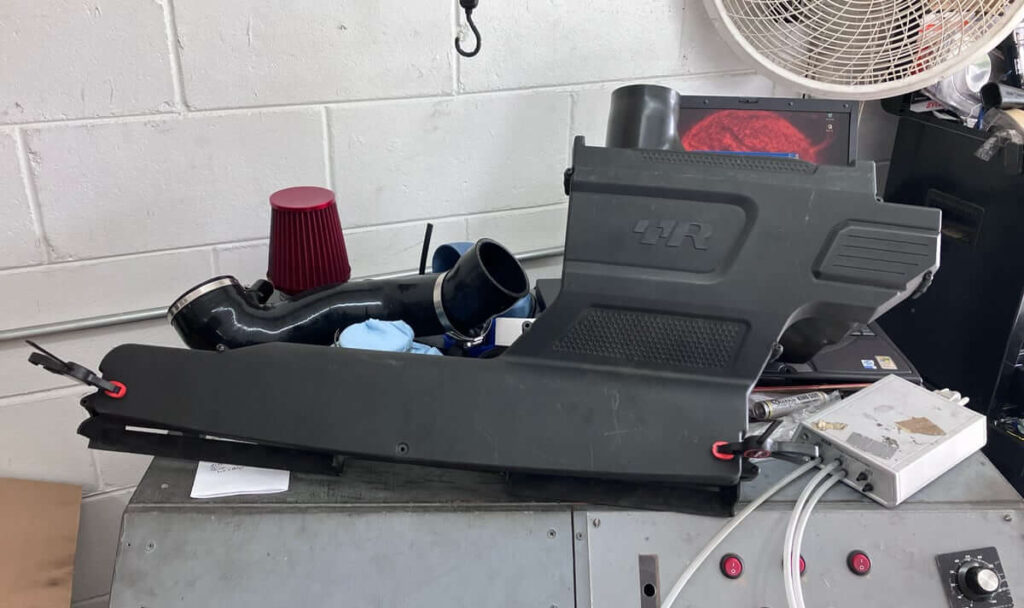
Retesting the Racingline intake with the enclosure resulted in a reduction in airflow rate, consistent with findings during street logging.
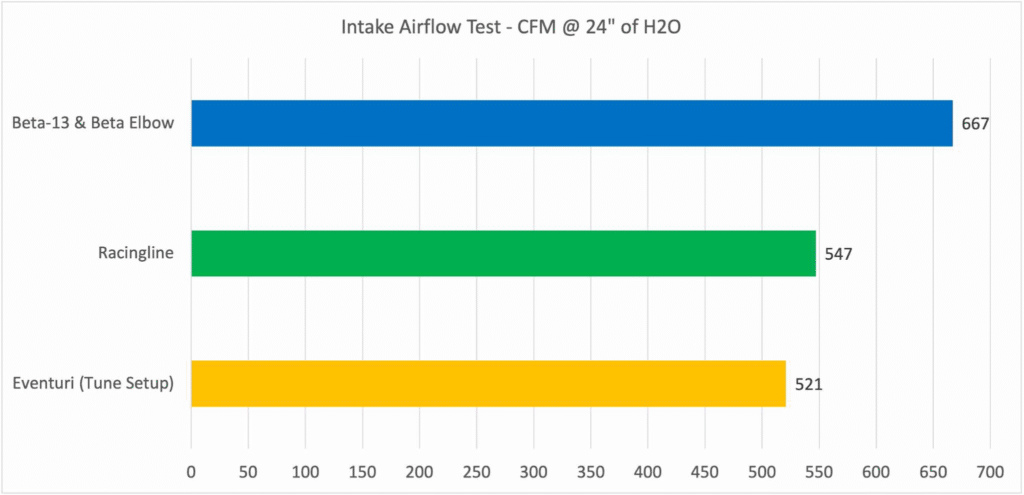
Note: The Beta-13 airflow is an estimate as it reaches the bench maximum flow rate of 600 CFM at 18″ of H2O.
Next step:
Designing the elbow to achieve an airtight seal with the turbocharger compressor housing will be the next area of focus, followed by modifying the MGM7 intake to accommodate the IS48 turbo inlet elbow.
